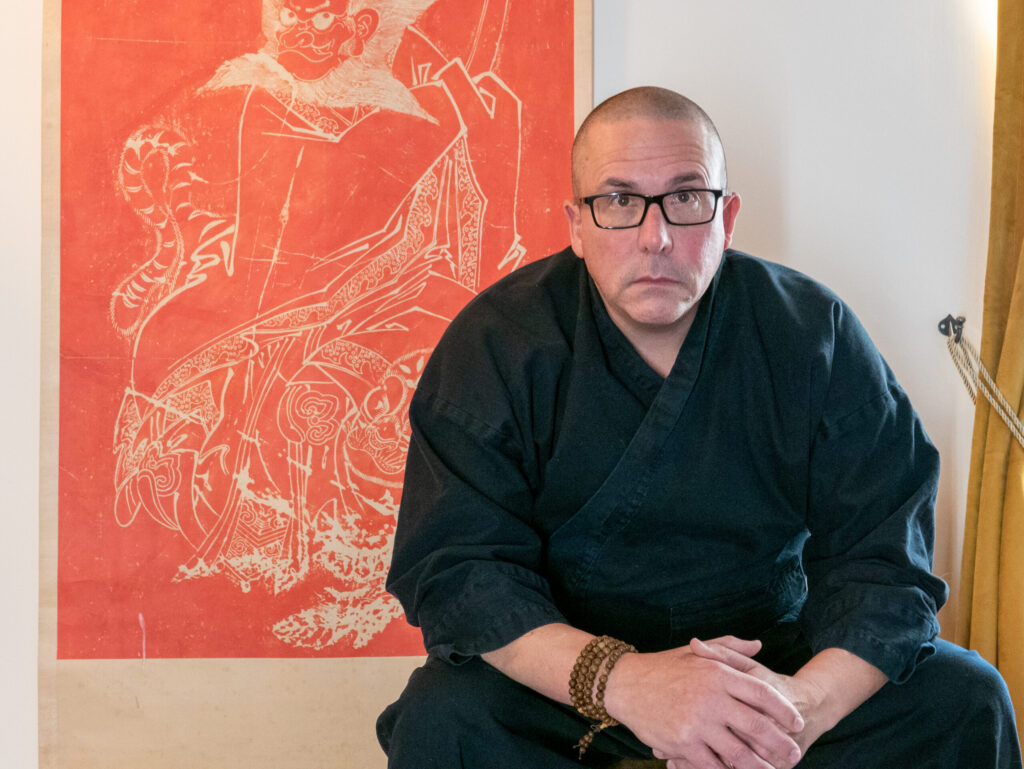Influences and Approach
Approach
From my Normandy atelier, I make ceramics that invite both use and speculation. Whether reliquary, vessel, chawan, or imagined artifact, my forms pair material precision with a sustained interest in silence, ambiguity, and deep time. Even the most traditional bowl, fired for the table or the hand, carries its own density of intention—a quiet thrum of history, of touch, of purpose. What emerges is often less an object than a provocation: a thing that appears to have slipped from some uncertain stratum of the world, asking you to consider it without telling you how.

Much of my practice—across both the functional and the fictive—unfolds in the charged interval between material and meaning. Clay never arrives empty; there is always an echo, a drift of implication, a quiet tug toward interpretation. I follow that pull until the work begins to speak in its own oblique dialect. Sometimes the object insists on austerity and refuses all elaboration. Other times it draws to itself an entire constellation of signs: fragments of text, invented field notes, soundscapes, diagrams, video traces, expedition seals—an expanding ecosystem of forms that cluster around the object without ever pinning it down. These surrounding elements aren’t explanations; they’re conditions—ways of thickening the object’s presence while leaving its core intact and unknowable.
This is a reciprocal process. The object resists, redirects, or absorbs whatever gathers around it. A bowl, a reliquary, a carved black stone—each negotiates its own threshold between fact and imagination, function and speculation, material and myth. My task is not to resolve that tension, but to sustain it—to give the object enough room to exceed its material facts, and the surrounding artifacts enough restraint to prevent them from becoming a single, authoritative reading. In the gap between the known and the barely imaginable, meaning flickers. That flicker is the work.
I move within an alchemic stew of memory, intuition, craft discipline, and wild-eyed experimentation—and the knowledge that whatever happens, it will all be all right.
Influences
None of this sprang fully formed. It’s the sedimented result of years spent chasing—and being chased by—an unruly constellation of influences.
First, this: decades ago, as an early medieval historian and archaeologist, I wrote an entire dissertation on inhumation accessory vessels. Yes, pots buried with dead people. I made some wild-eyed claims, some actually backed by something resembling science. Let me know if you’d like to be the fourth person in the whole world to read it. So, pots and I go way, way back.
But—aside from the contents and circumstances of late Roman, Anglo-Saxon, and Carolingian burials—I’ve been particularly shaped by my long to-and-fro with the Paleolithic and Neolithic and their incomprehensible productions; the calligraphy and painting from the Muromachi through the Edo periods in Japan; the poetry of the Tang dynasty in China, that later of Bashō, Ryōkan, and Ikkyū in Japan, and even later that of Jim Harrison and Ada Limón in the US; the pre-cruciform churches of Anglo-Saxon England; the interior excesses of the late Renaissance and immediately afterwards; the shadows of Junichirō Tanizaki and Caravaggio; the transcendence of Bach, Mozart, Satie, and Chopin (and more than a little Wagner); the polychromic wordshards of Borges; and an ever-expanding ecology of extraordinarily creative ceramicists, musicians, architects, sculptors, painters, poets, and writers that make the contemporary such an interesting and exciting place within which to live.
After years elsewhere, I now live in very rural France, where I also garden, cook, and occasionally write.
As a former member of a number of corporate boards, professional societies, various cliques, and mysterious brotherhoods, I now only affiliate as a membre, Collège 3, Institut pour les Savoir-Faire Français (anciennement L’Institut National des Métiers d’Art), and membre, the Chambre de Métiers et de l’Artisanat Normandie, which seems after all, absolutely sufficient.
